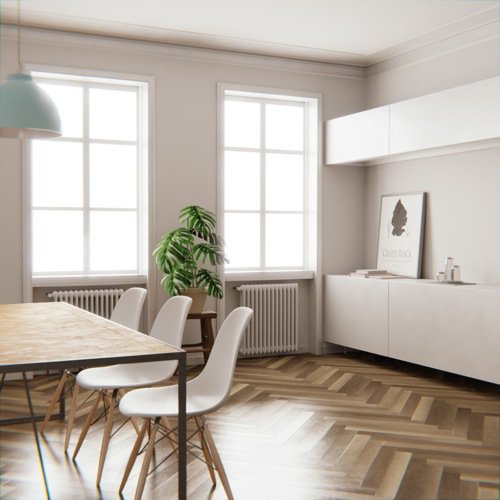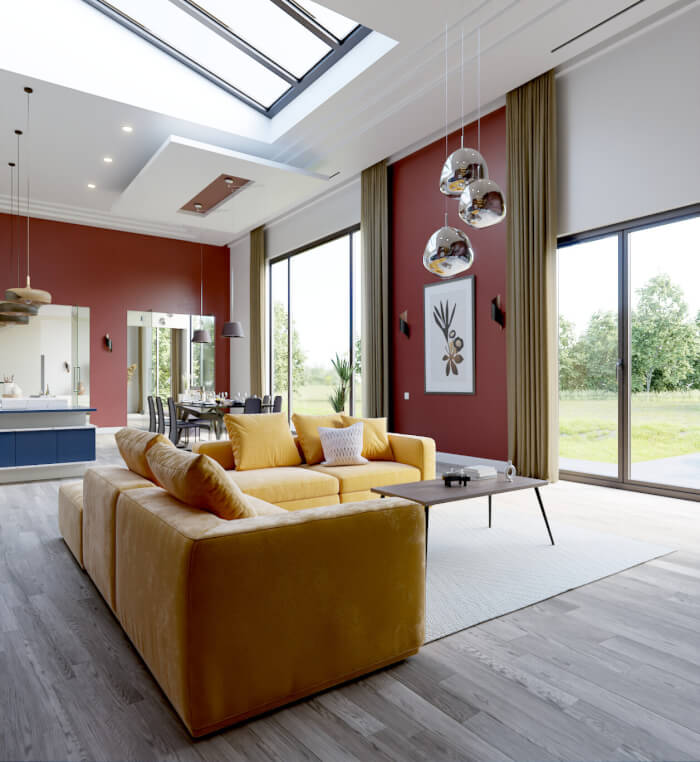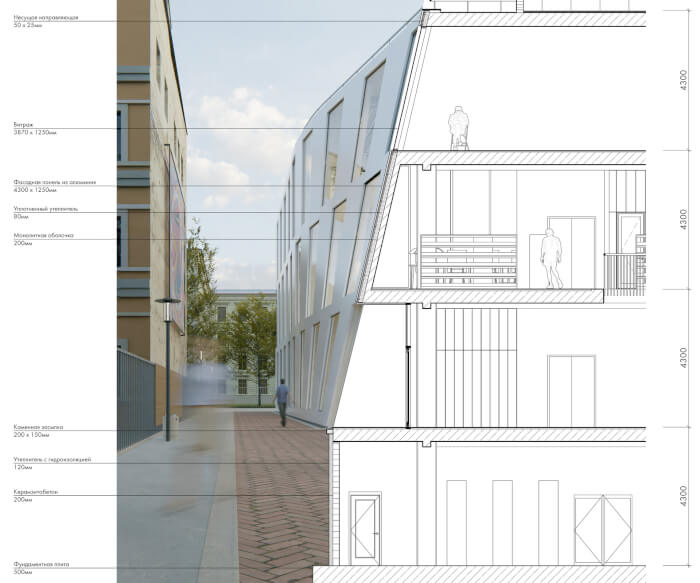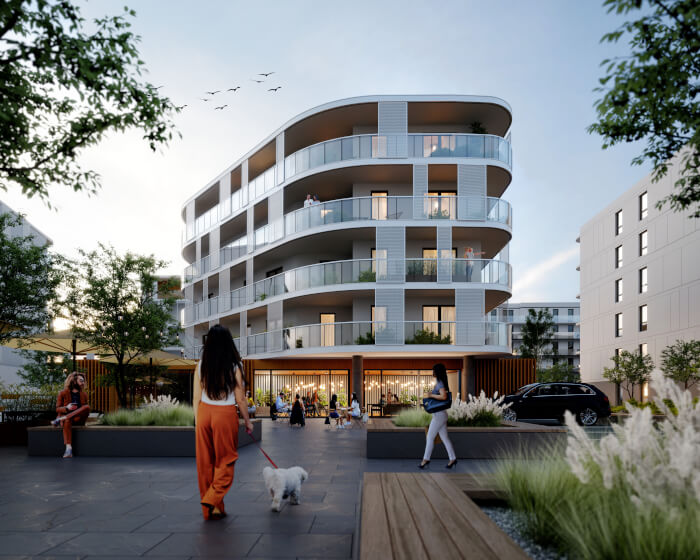
When you start to set up a project for architectural visualization in Blender, you probably will follow a few guidelines for lighting. One of the most common nowadays is to get an HDR map in the background, which will help you to spread diffuse light all around your scene.
That was not the case with this excellent example of interior rendering for architecture, using Cycles e a plain white background from 3D Artist Joni Mercado.

According to the artist description of the project, he manages to light the scene using a white background and two sun lamps. What makes the rest of the magic, regarding lights is filmic.
If you don’t remember, ever since Blender 2.79 you can use a color profile called filmic. The new profile will boost the dynamic range in your renders, and almost immediately your scene will look brighter.
Why is he using two sun lamps? The reason for two sun lamps in the scene is to create the bright reflection on the floor.
Another tool that appears in the description that also came along version 2.79 is denoising. Even with default settings, the tool will save you a lot of render time, removing noise from images.
Do you want to see more images from this project? Follow this link to the BlenderArtists forums to see more angles, and clay renders of the project. Better yet, you can also see some of the settings used by the artist!
Yes, he was kind enough to post settings for lights and rendering.
That is an excellent example of interior rendering using Blender and Cycles. You can not check the images as a piece of artwork, but also as a source of information. Use the screenshots and settings to compare the solution from the artist, with your projects.





Thanks for sharing Allan! Regards!
encantado de ver este trabajo aqui.. saludos
buen trabajo Jonimercado
excelente trabajo joni
excelente trabajo